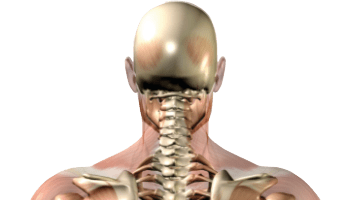Trapped nerve pain can be a frustrating and debilitating condition that can significantly impact a person’s quality of life. The constant shooting pains and tingling can feel like a never-ending battle that takes a toll on a person’s physical and mental well-being.
Contents
What Is Trapped Nerve Pain?
Nerves can become painful if they become trapped and compressed between bones, tight muscles and shortened ligaments. Nerve pain is characterised by symptoms being felt beyond the area where the nerve is initially compressed. For example, a trapped nerve in the lumbar spine can cause symptoms in the foot. Nerves are most commonly compressed as they pass through narrow spaces or through muscles in the body. These damaged nerves send messages to your brain to signal pain, which can also feel like pins and needles or numbness.
In fact, the exact sensation of nerve pain can vary greatly from person to person. Sometimes, trapped nerve pain can feel as sharp and sudden as an electric shock. For others, the pain radiates towards extremities such as the arms and hands. Some people have greater sensitivity to touch or cold – while others experience pain as a result of touch that would not normally be painful, such as something lightly brushing the skin.
Nerve pain tends to be worse at night, as researchers believe that the body is in a more sensitive state (more information is here).
Common examples of this are:
 Symptoms in the arm are caused by trapped nerves being compressed between your collarbone and first rib (Thoracic Outlet Syndrome).
Symptoms in the arm are caused by trapped nerves being compressed between your collarbone and first rib (Thoracic Outlet Syndrome).- Pain in the hand, caused by compression of the nerves in the wrist (Carpal Tunnel Syndrome).
- Symptoms in the spine, due to a spinal disc slipping out of place putting pressure on nerves in the surrounding area (Herniated Disc).
- Symptoms in the neck, caused by compression here (Cervical Radiculopathy)
- Symptoms in the lower leg and foot, are caused by trapped nerves being compressed in the lumbar spine or buttocks (Sciatica).
What Are the Other Causes of Trapped Nerve Pain?
Trapped nerve pain can also be caused by repetitive motion, such as clicking a mouse or playing an instrument; poor posture, especially sitting or standing in the same position for a long time; and injuries and trauma from accidents, sports and surgery.
Can We Help with Your Trapped Nerve Pain?
You don’t have to suffer in silence with trapped nerve pain. Our practitioners treat many people with trapped nerve-related symptoms. Our aim is to treat, not only the site of the nerve compression causing the pain but to understand and correct the process that led to it. Articulation or mobilisation of joints, relaxing tight muscles and stretching ligaments are some of the techniques that will be used to release trapped nerves anywhere in the body.
We listen to the body and gently coax it back to a balanced, relaxed and non-threatened state. After all, pain is your body’s clever way of telling you that something is wrong.
We can also provide advice and guidance on how to maintain good posture and avoid or modify activities that may exacerbate nerve compression.
Following your examination, the diagnosis and likely cause of the nerve compression will be explained and either a treatment plan will be prescribed, or in some extreme cases, a referral for an MRI may be required.
Learn more about how osteopathy can treat trapped nerve pain here.
We hope that you will choose to never live in fear of nerve pain again by booking an appointment at our friendly, family-run clinic today.

